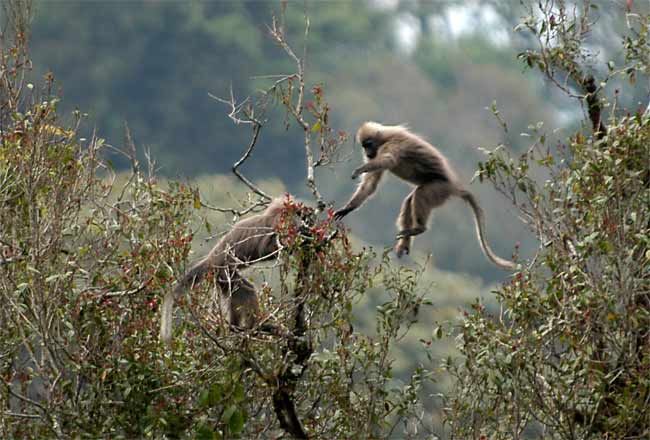Newfound Monkey Could Disappear Soon

A monkey species discovered only three years ago could soon go extinct in its tiny forest home in Tanzania, say conservation scientists.
The kipunji (Rungwecebus kipunji and also known as the Highland Mangabey) was discovered in 2005 in the Southern Highlands and Udzungwa Mountains in Tanzania. In 2006, genetic analyses revealed the species represented an entire new genus of primate — the first since 1923.
Now, the Wildlife Conservation Society (WCS) in New York has published a census of the endangered primate, revealing 1,117 individuals of the species reside in two isolated forest regions spanning less than 7 square miles (18 square kilometers). The animals live in 38 groups, each with 15 to 39 members.
The forest-dweller sports long whiskers and a crest of hair on the tip of its head. The monkey is known for its unique honk-bark call.
"The kipunji is hanging on by the thinnest of threads," said Tim Davenport, Tanzania country director for the WCS. "We must do all we can to safeguard this extremely rare and little understood species while there is still time."
WCS researchers found that much of the monkey's remaining habitat is severely degraded by illegal logging and land conversion. This loss of habitat along with the monkey being hunted by poachers has WCS scientists worried about the species' survival.
WCS officials are proposing that that the kipunji be classified by the World Conservation Union (IUCN) as "critically endangered," which means the species is threatened with extinction in the wild if immediate conservation action is not taken.
Sign up for the Live Science daily newsletter now
Get the world’s most fascinating discoveries delivered straight to your inbox.
The kipunji census research, detailed in the July issue of the journal Oryx, was funded by the WCS, Critical Ecosystem Partnership Fund, and Fauna and Flora International Flagship Species Fund.
- Video: Clever Primates
- Top 10 Species Success Stories
- Image Gallery: Endangered Wildlife












